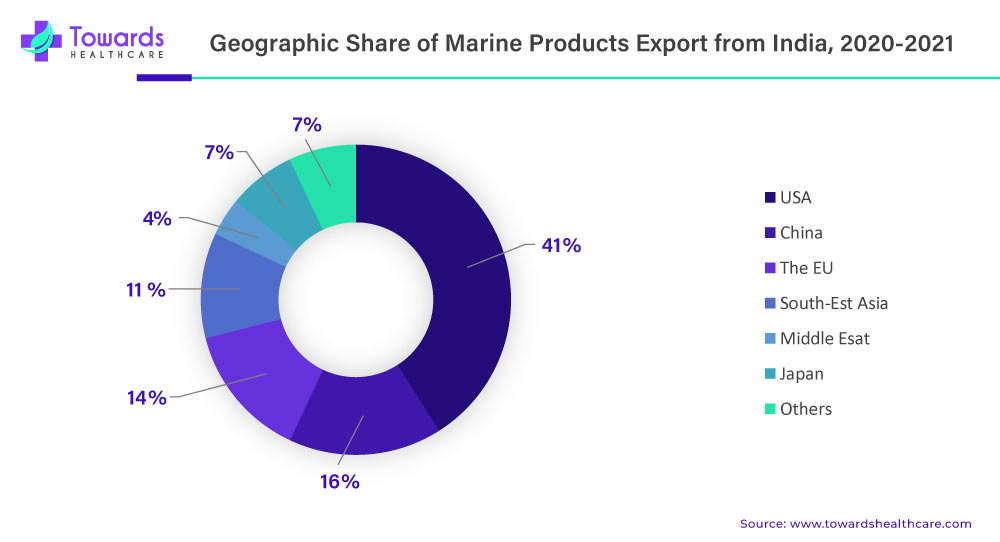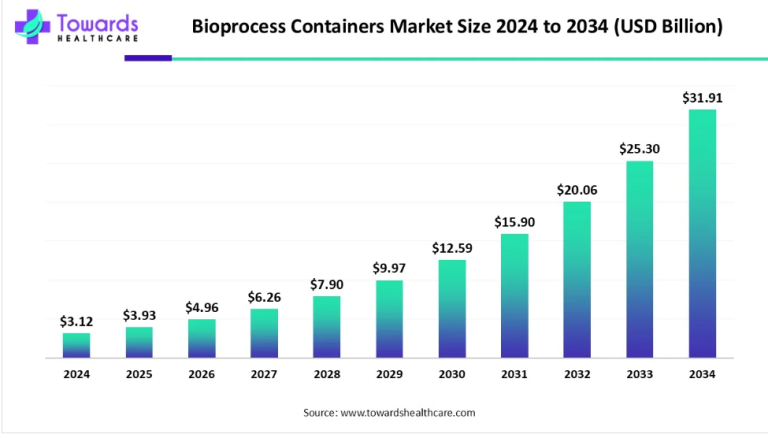The global cold storage market is experiencing remarkable growth, driven by the expansion of the food and pharmaceutical industries. With an estimated value of USD 112 billion in 2022, the market is projected to reach a staggering USD 383.05 billion by 2032, growing at a CAGR of 12% from 2023 to 2032. This exponential growth can be attributed to the increasing demand for perishable goods, stringent regulations, technological advancements, and the rise of e-commerce. In this article, we will delve into the various factors fueling the growth of the cold storage market and explore the opportunities it presents for investment and expansion.

The boom in the cold storage market is due to a significant rise in demand for perishable food items
The cold storage market refers to the storage and preservation of perishable goods, primarily food, and pharmaceutical products, at controlled temperatures to maintain their freshness and quality. Cold storage facilities are equipped with refrigeration systems to create and maintain specific temperature conditions, ensuring that products remain within specified temperature ranges.
The cold storage market has witnessed significant growth in recent years due to various factors. One of the key drivers is the increasing demand for perishable goods, including fresh fruits and vegetables, dairy products, meat, seafood, and frozen food items. As the global population grows and consumer preferences shift towards healthier and fresher food options, the need for reliable cold storage facilities becomes crucial to preserve the quality and extend the shelf life of these products. Additionally, globalization and international trade have led to the expansion of the cold supply chain, with the need to transport perishable goods across longer distances.
Cold storage market facilities play a vital role in maintaining the integrity and safety of products during transportation, ensuring that they reach their destinations in optimal condition. The growth of the e-commerce sector and the increasing demand for online grocery delivery services have further fueled the need for efficient cold storage facilities to handle the storage and distribution of perishable products.
Furthermore, stringent regulations and quality standards imposed by regulatory bodies and industry associations have increased the importance of cold storage in ensuring food safety and compliance. Cold storage market facilities are required to meet specific temperature control and hygiene standards to prevent contamination and maintain the integrity of the stored products. This has led to investments in technologically advanced cold storage infrastructure and equipment to meet these regulatory requirements.
Emerging economies, such as China and India, have witnessed rapid growth in the cold storage market due to changing consumer lifestyles, increasing urbanization, and the modernization of retail and food service sectors. These countries are experiencing rising demand for frozen and processed food products, leading to the expansion of cold storage infrastructure to meet the growing needs of the population.
Innovation and advancements in cold storage market technology have also contributed to market growth. The development of energy-efficient refrigeration systems, temperature monitoring, and control systems, and warehouse automation technologies have improved the efficiency, reliability, and cost-effectiveness of cold storage operations. The cold storage market is expected to continue its growth trajectory in the coming years. The increasing demand for perishable goods, the expansion of the cold supply chain, and the focus on food safety and compliance are driving the need for advanced and efficient cold storage facilities.
With ongoing technological advancements and evolving consumer preferences, the cold storage market presents opportunities for investment and expansion in the global logistics and supply chain industry.
Rising Demand for Perishable Goods
One of the key drivers of the cold storage market is the surging demand for perishable food items. As the global population grows and consumer preferences shift towards healthier and fresher food options, the need for reliable cold storage facilities becomes crucial to preserve the quality and extend the shelf life of these products. The demand for perishable goods such as fresh fruits and vegetables, dairy products, meat, seafood, and frozen food items has witnessed a significant upswing in recent years.
Furthermore, the globalization and international trade have led to the expansion of the cold supply chain, with the need to transport perishable goods across longer distances. Cold storage market facilities play a vital role in maintaining the integrity and safety of products during transportation, ensuring that they reach their destinations in optimal condition.
Stringent Regulations and Quality Standards
In recent years, stringent regulations and quality standards imposed by regulatory bodies and industry associations have increased the importance of cold storage market in ensuring food safety and compliance. Cold storage facilities are required to meet specific temperature control and hygiene standards to prevent contamination and maintain the integrity of the stored products.
To meet these regulatory requirements, investments in technologically advanced cold storage infrastructure and equipment have become imperative. This has led to the development of energy-efficient refrigeration systems, temperature monitoring, and control systems, and warehouse automation technologies. These advancements have improved the efficiency, reliability, and cost-effectiveness of cold storage operations.
Growth in Emerging Economies
Emerging economies, such as China and India, have witnessed rapid growth in the cold storage market due to changing consumer lifestyles, increasing urbanization, and the modernization of retail and food service sectors. These countries are experiencing rising demand for frozen and processed food products, leading to the expansion of cold storage infrastructure to meet the growing needs of the population.
The expanding middle class in these countries, coupled with increasing disposable incomes, has fueled the demand for high-quality perishable goods. As a result, the cold storage market in these regions is witnessing significant growth and offers lucrative opportunities for investment and expansion.
Technological Advancements Driving Efficiency
Innovation and advancements in cold storage market technology have played a crucial role in the growth of the market. The development of energy-efficient refrigeration systems, temperature monitoring and control systems, and warehouse automation technologies have improved the efficiency, reliability, and cost-effectiveness of cold storage operations.
Energy-efficient refrigeration systems have emerged as a game-changer in the industry, reducing energy consumption and minimizing environmental impact. These systems utilize energy-efficient compressors, smart temperature controls, and improved thermal insulation, leading to cost savings and sustainability efforts.
Furthermore, automation and robotics have revolutionized cold storage market operations, enhancing efficiency and effectiveness. Automated storage and retrieval systems, robotic palletizing, and conveyor systems have streamlined inventory management and order fulfillment processes, reducing labor costs and minimizing errors.
The Cold Storage Market Revolution in the Food Processing
The expansion of the food processing industry has been a driving force behind the revolution in the cold storage market. With the growing demand for processed and packaged food products, efficient storage and preservation have become essential.
The changing consumer preferences and lifestyles have led to a surge in the production of convenience foods that are ready-to-eat or require minimal preparation. Cold storage facilities play a vital role in preserving the quality, freshness, and safety of these food products.
Furthermore, the globalization of the food industry and the expansion of international trade have increased the need for cold storage facilities. Perishable food items such as fruits, vegetables, meat, dairy products, and seafood are transported across long distances, and maintaining the right temperature throughout the supply chain is crucial. Cold storage facilities provide the necessary infrastructure to store and transport these perishable goods, ensuring that they reach their destinations in optimal condition.
Ensuring Quality and Safety in the Pharmaceutical and Healthcare Market
The growth of the pharmaceutical and healthcare sector has significantly contributed to the expansion of the cold storage market. Cold storage facilities play a crucial role in preserving the integrity and efficacy of temperature-sensitive pharmaceutical products and healthcare supplies.
The increasing demand for vaccines, biologics, and other temperature-sensitive medications has driven the need for strict temperature control throughout the supply chain. Cold storage facilities provide the necessary infrastructure to store and distribute these pharmaceutical products, ensuring that they remain within the required temperature range.
The globalization of the pharmaceutical industry has further increased the need for cold storage facilities in the transportation and distribution of pharmaceutical products across different regions. Cold-chain logistics are critical to maintaining the product’s integrity and compliance with regulatory standards during international shipping.
Additionally, the COVID-19 pandemic has highlighted the importance of cold storage in the healthcare sector. The development and distribution of vaccines require stringent temperature control to maintain their stability and efficacy. Cold storage facilities have played a critical role in storing and distributing these vaccines, enabling their timely delivery to vaccination centers worldwide.
Technological Advancements Enhancing Efficiency in Cold Storage Solutions
Technological advancements in cold storage solutions have revolutionized the industry, offering improved efficiency, sustainability, and operational effectiveness.
Smart monitoring and control systems leverage advanced sensors, Internet of Things (IoT) technology, and data analytics to enable real-time monitoring of temperature, humidity, and other environmental factors in cold storage facilities. This continuous monitoring ensures optimal conditions for storing perishable goods, preventing spoilage, and maintaining product quality.
Energy-efficient refrigeration systems have emerged as a significant technological advancement in cold storage. These systems utilize energy-efficient compressors, smart temperature controls, and improved thermal insulation to reduce energy consumption and lower operating expenses.
Automation and robotics have also played a significant role in enhancing the efficiency and effectiveness of cold storage operations. Automated storage and retrieval systems, robotic palletizing, and conveyor systems have improved inventory management and order fulfillment processes, reducing labor costs and minimizing errors.
The integration of data management and connectivity solutions has further optimized cold storage operations. Cloud-based storage platforms, integrated with advanced analytics capabilities, enable enhanced visibility and decision-making. Stakeholders can access real-time data and insights regarding inventory levels, storage capacity, and product shelf life, leading to better supply chain management.
Cold Storage Economics: Overcoming High Operating Costs for Sustainable Growth
High operating costs are a significant challenge in the cold storage market. Cold storage facilities play a crucial role in preserving the quality and safety of temperature-sensitive products, such as food, pharmaceuticals, and healthcare supplies. However, maintaining these facilities at the required temperature conditions comes at a considerable expense.
One of the main contributors to high operating costs is energy consumption. Cold storage facilities rely on refrigeration systems, compressors, and other cooling equipment to maintain the desired temperature range. These systems consume a significant amount of electricity to continuously cool the storage areas. Energy costs can vary depending on factors such as the size of the facility, the temperature requirements, and the efficiency of the refrigeration systems. In regions with high electricity prices, energy expenses can be a major burden on the overall operating costs. Another factor that adds to the operating costs is the maintenance and repair of cold storage equipment.
The refrigeration systems, insulation materials, and other components in these facilities require regular maintenance to ensure optimal performance. Routine maintenance activities include cleaning, inspections, and replacing worn-out parts. In case of equipment breakdowns or malfunctions, repairs can be costly, especially if specialized technicians or specific spare parts are needed. Additionally, the age of the equipment can impact maintenance and repair costs, as older systems may require more frequent repairs and replacement of outdated components.
Furthermore, the real estate and infrastructure needed for cold storage facilities contribute to the overall operating costs. Cold storage warehouses require specialized construction materials and insulation to create a controlled environment. These facilities need to meet specific standards and regulations to ensure the proper storage conditions for temperature-sensitive products. The cost of acquiring or building such facilities, along with the ongoing expenses for property taxes, insurance, and facility upkeep, add to the overall operating costs.
To address the challenge of high operating costs, cold storage companies are exploring various strategies. These include implementing energy-efficient technologies, optimizing temperature control systems, and adopting sustainable practices. Upgrading to energy-efficient refrigeration systems and insulation materials can significantly reduce energy consumption and lower operating expenses. Investing in preventive maintenance and regular equipment inspections can help identify and address potential issues before they become costly repairs. Additionally, some cold storage facilities are exploring alternative energy sources, such as solar power, to reduce their reliance on traditional electricity.
While high operating costs remain a challenge in the cold storage market, industry players are actively seeking innovative solutions to improve energy efficiency, optimize maintenance practices, and reduce expenses. These efforts not only help lower costs but also contribute to a more sustainable and environmentally friendly cold storage industry.
Overcoming High Operating Costs for Sustainable Growth
High operating costs pose a significant challenge in the cold storage market. Cold storage facilities require substantial energy consumption to maintain the desired temperature range, leading to high energy costs. Additionally, the maintenance and repair of cold storage equipment can be expensive, especially if specialized technicians or specific spare parts are required.
The real estate and infrastructure needed for cold storage facilities also contribute to the overall operating costs. These facilities require specialized construction materials and insulation to create a controlled environment, along with ongoing expenses for property taxes, insurance, and facility upkeep.
To address these challenges, cold storage companies are exploring various strategies. Investing in energy-efficient technologies can significantly reduce energy consumption and lower operating expenses. Implementing preventive maintenance and regular equipment inspections can help identify and address potential issues before they become costly repairs. Some facilities are also exploring alternative energy sources, such as solar power, to reduce reliance on traditional electricity sources.
While high operating costs remain a challenge, industry players are actively seeking innovative solutions to improve energy efficiency, optimize maintenance practices, and reduce expenses. These efforts not only lower costs but also contribute to a more sustainable and environmentally friendly cold storage industry.
Unlocking Growth Opportunities through E-commerce
The e-commerce revolution has had a profound impact on the cold storage market, driven by the growing popularity of online shopping and the increasing demand for perishable goods. The need for efficient and reliable storage and distribution of temperature-sensitive products has created significant growth opportunities in the market.
Cold storage providers are investing in advanced technologies and infrastructure to meet the demand from e-commerce retailers. Temperature-controlled zones, state-of-the-art refrigeration systems, and monitoring tools ensure that perishable products are stored and shipped in optimal conditions, preserving their quality and freshness.
E-commerce Revolution: Unlocking Growth Opportunities in the Cold Storage Market
The e-commerce revolution has had a profound impact on various industries, and the cold storage market is no exception. With the growing popularity of online shopping and the increasing demand for perishable goods, the cold storage industry has witnessed significant growth and has become an essential component of the e-commerce supply chain.
One of the key growth opportunities in the cold storage market driven by e-commerce is the need for efficient and reliable storage and distribution of temperature-sensitive products. Perishable goods such as fresh produce, dairy products, meat, and frozen items require strict temperature control to maintain their quality and safety. As consumers increasingly turn to online platforms for their grocery shopping needs, e-commerce companies must ensure that these perishable products are stored and transported in optimal conditions.
To meet this demand, cold storage providers are investing in advanced technologies and infrastructure. They are equipping their facilities with temperature-controlled zones, state-of-the-art refrigeration systems, and monitoring tools to maintain the desired temperature ranges for different product categories. This enables e-commerce retailers to store and ship perishable goods with confidence, ensuring that customers receive fresh and high-quality products.
Conclusion
The cold storage market is witnessing remarkable growth, driven by the increasing demand for perishable goods, stringent regulations, technological advancements, and the rise of e-commerce. The expansion of the food and pharmaceutical industries, coupled with changing consumer preferences and globalization, has created immense opportunities for investment and expansion in the market.
Technological advancements have played a crucial role in enhancing the efficiency and effectiveness of cold storage operations. Energy-efficient refrigeration systems, automation, and data management solutions have revolutionized the industry, improving sustainability, reducing costs, and optimizing supply chain management.
While high operating costs remain a challenge, industry players are actively seeking innovative solutions to improve energy efficiency and reduce expenses. The e-commerce revolution has unlocked significant growth opportunities in the market, as the demand for efficient storage and distribution of temperature-sensitive products continues to rise.
Key Market Players
- Americold Logistics
- Lineage Logistics Holdings
- Nichirei Corporation
- Burris Logistics
- Agro Merchants Group
- Kloosterboer
- United States Cold Storage
- Tippmann Group
- VersaCold Logistics Services
- Henningsen Cold Storage Co
- Coldman
- Congebec Inc.
- Conestoga Cold Storage
- NewCold
- Hanson Logistics
Segments Covered in the Report
By Warehouse Type
- Private
- Public
By Temperature Type
- Frozen
- Chilled
By Construction
- Bulk Storage
- Production Stores
- Ports
By Application
- Dairy
- Processed Food
- Fruits & Vegetables
- Fish, Meat, & Sea Food
- Pharmaceuticals
By Geography
- North America
- U.S.
- Canada
- Europe
- U.K.
- Germany
- France
- Asia Pacific
- China
- India
- Japan
- South Korea
- Rest of the World
In conclusion, the cold storage market presents a promising future, with infinite potential for growth and investment. As the demand for perishable goods and temperature-sensitive pharmaceuticals and healthcare supplies continues to increase, the need for advanced and efficient cold storage facilities will continue to grow. The integration of technology and innovation will further drive the efficiency, sustainability, and profitability of the industry, making it a vital component of the global logistics and supply chain industry.




